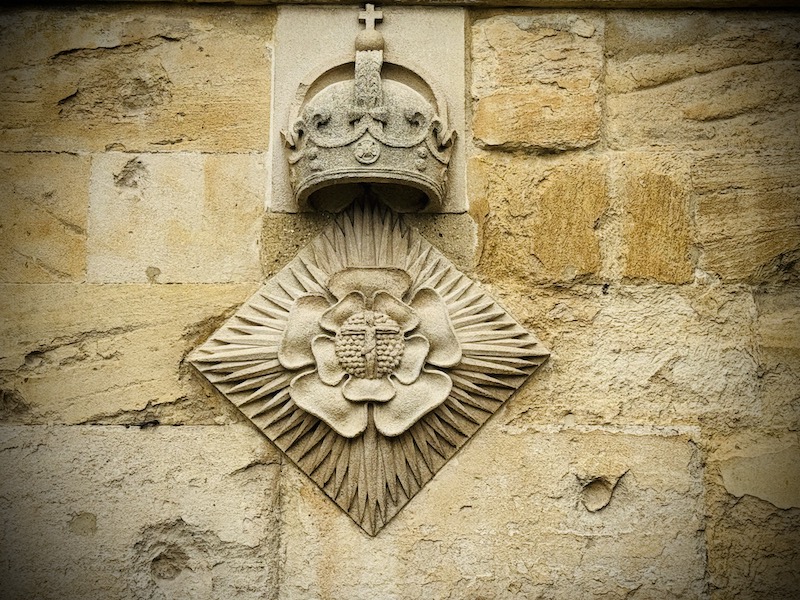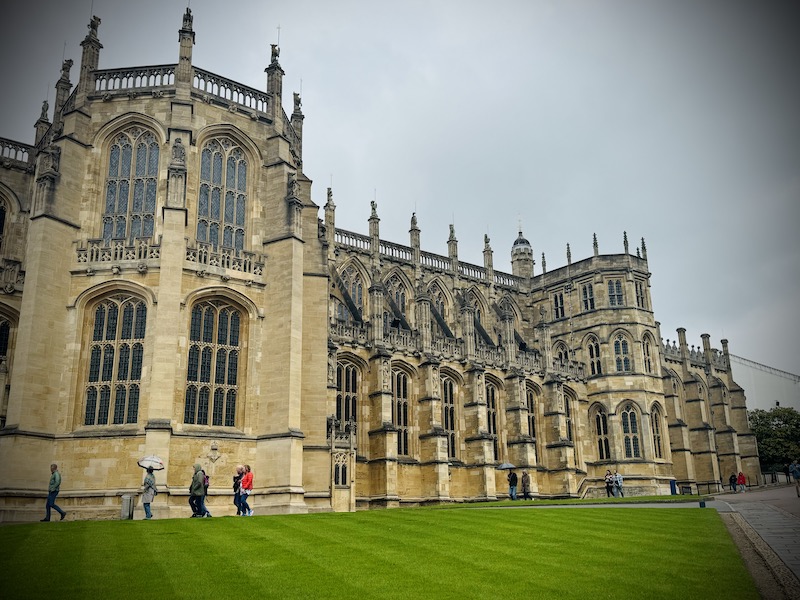It’s a nexus of religion, royalty, and architectural splendor. The history of St. George’s Chapel with its illustrious occupants and stunning design make it one of the most iconic landmarks in the United Kingdom and is a must see when visiting Windsor.
Origins and Early History:
The origins of St. George’s Chapel can be traced back to the reign of King Edward III in the 14th century. Construction began in 1475 under the direction of Edward IV. It was his successors, including Henry VII and Henry VIII, who contributed significantly to its completion. The chapel’s primary purpose was to serve as a religious center for the Order of the Garter, the most prestigious chivalric order in England.
Architectural Marvel:
St. George’s Chapel is a masterpiece of Gothic architecture. It boasts intricate stonework, soaring vaulted ceilings, and stunning stained glass windows. The chapel’s exterior features elaborate buttresses and pinnacles. The fan-vaulted ceiling of the nave is a particularly impressive architectural feat, creating a sense of grandeur and reverence.

Cultural Significance:
Throughout its history, St. George’s Chapel has been closely intertwined with the monarchy and the British aristocracy. It has hosted numerous royal weddings, including the marriage of Prince Harry and Meghan Markle in 2018. The chapel also serves as the final resting place for many members of the royal family, including the late Queen Elizabeth II and Henry VIII, making it a site of pilgrimage and remembrance for monarchists and history enthusiasts alike.
Royal Burials:
St. George’s Chapel is home to the tombs and memorials of numerous kings, queens, and other notable figures from British history. Among the most famous burials are those of King Henry VIII and his third wife, Jane Seymour, as well as King George VI and Queen Elizabeth II, her husband Prince Phillip and sister, Princess Margaret. The chapel’s Royal Vault contains the remains of monarchs dating back to the 19th century, while the Albert Memorial Chapel houses the tombs of Queen Victoria and Prince Albert.
Historic Events:
St. George’s Chapel has witnessed many historic events throughout the centuries, including coronations, baptisms, and funerals. It was the site of Queen Victoria’s wedding to Prince Albert in 1840, marking the beginning of a new era for the British monarchy. The chapel also played a significant role in the state funeral of King George VI in 1952, as well as the funeral services for Queen Elizabeth The Queen Mother and Princess Margaret.
Preservation and Restoration:
Over the years, St. George’s Chapel has undergone several preservation and restoration efforts to ensure its continued beauty and structural integrity. The chapel suffered damage during the English Civil War in the 17th century but was later restored to its former glory. More recently, extensive restoration work was carried out in the late 20th and early 21st centuries to address issues such as weathering and deterioration.
Reasons to Go:
St. George’s Chapel stands as a testament to the enduring legacy of the British monarchy and the rich architectural heritage of the United Kingdom. Its centuries-old history, magnificent design, and royal connections make it a cherished national treasure and a symbol of British identity. It continues to be a place of worship, commemoration, and celebration, inspiring awe and reverence in all who visit it, ensuring that its legacy will endure for generations to come.

